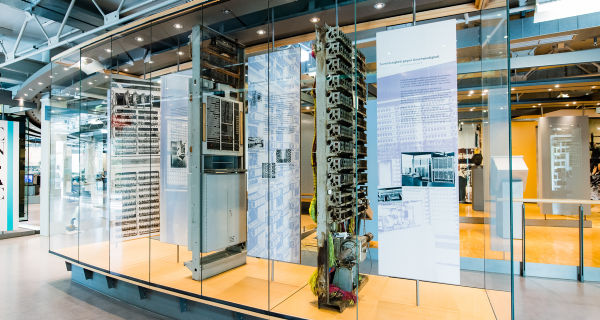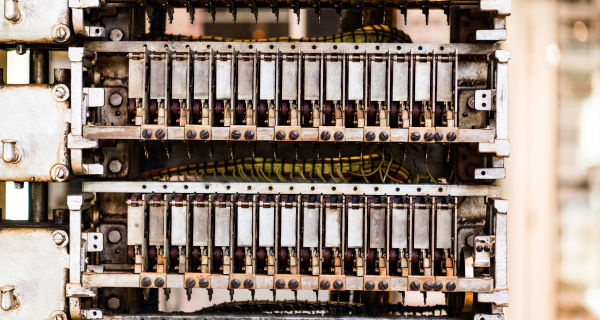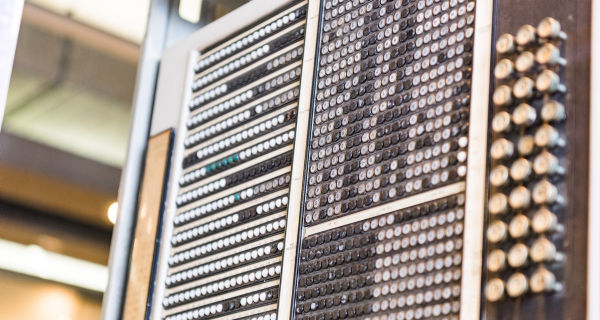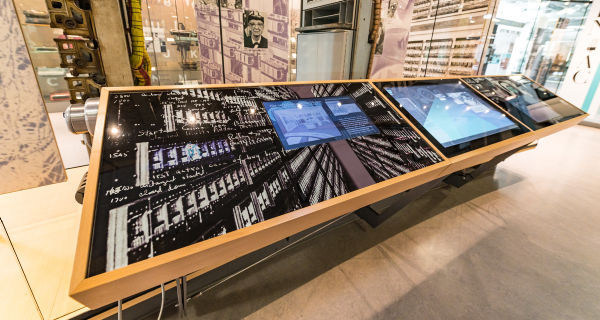The section of the exhibition entitled "The first computers - Ideas, concepts and machines" consists of a large showcase with original parts of the Harvard Mark I and Model V relay computers, as well as a multimedia installation illustrating the history of computers from 1935 to 1955.
The Harvard Mark I - the first program-controlled computer in the USA
The Harvard Mark I (also known as the IBM Automatic Sequence-Controlled Calculator) was a relay computer controlled by punched tape that IBM began to develop in 1939 and completed in 1944. It was based on a suggestion that had been put forward by Howard H. Aiken in 1937. While working on his doctorate in physics at Harvard University, Aiken had carried out extensive com-putations with mechanical desk calculators, and this had led him to the idea of a program-controlled computer.
At almost the same time, relay computers were developed at Bell Laboratories in New York following a suggestion by the mathematician George R. Stibitz. The starting point for these developments lay in extensive calculations to improve the transmission quality of telephone calls over long distances and - once the USA had entered World War II - ballistic computations for the U.S. Army. The most ambitious type was the Model V, which was designed for general applications. Two of these systems were built in 1946/47.
Important forerunners of modern computers
Aiken's and Stibitz's relay computers were not stored-program, universal computers, and therefore not computers in today's sense of the word. However, they were important forerunners. The concept of the stored-program, universal computer had been described by John von Neumann in his 1944 EDVAC report, and had a major impact on further developments throughout the world.
A multi-media station shows all computers that were built by 1955 together with their main predecessors. Although the first two computers with a von Neumann architecture were built in Great Britain in 1948, the USA dominated all further development. Computers that were built in the next few years were primarily one-off items for military purposes. Over 100 different computers were in use by 1955. The mid-1950s saw the rise of the computer industry, with computers spreading throughout science and business.



